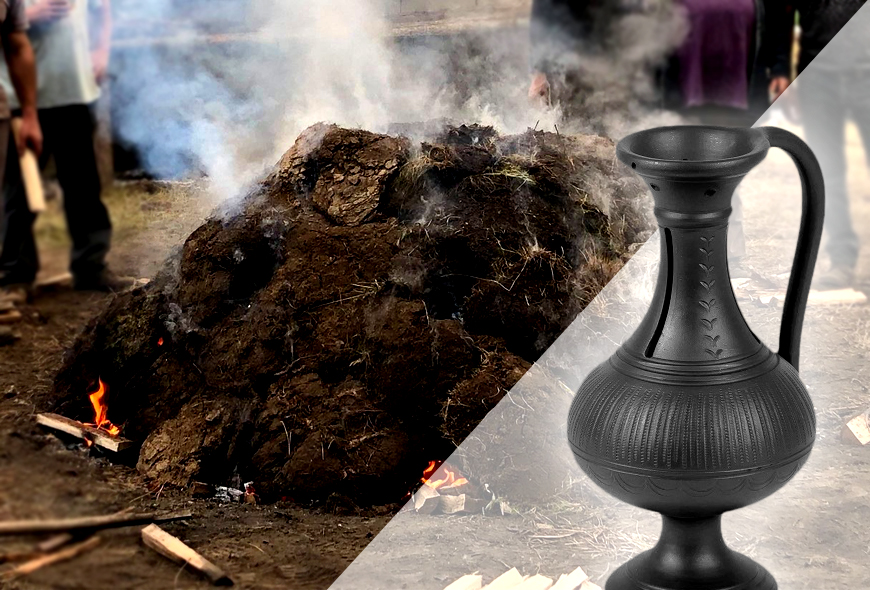Soenga - Making Black Pottery

It is quite common for our customers to ask whether the black clay is painted, but the answer is, no. It is not painted, as the black color is achieved both on the outside and inside through cooking, reduction of oxygen and the absorption of carbon (smoke). In addition to its characteristic color, this method , provides good waterproofing capacity.
Soenga is the name given to the ancestral process of making black ceramics.
The pieces are placed on a grill made of pine beams and the fire is started with pine needles placed underneath. This is the first phase of cooking, which takes around an hour and whose objective is to dry the pieces as much as possible so that they do not crack during the main cooking process.
In the second and main cooking phase, which takes around 4 hours, the following preparations are carried out:
- A circular hole is made in the ground half a meter deep. This hole serves as an oven for cooking the pieces.
- The display of the pieces is done with the help of leftovers from previous cooking
- The strongest pieces are placed at the base of the pile in order to support the rest.
- The covering of the hole and the pieces is made with pine chips and many layers of clods of earth, leaving just a vent at the top that serves as a chimney.
- Holes are purposely left in the cover to serve as a combustion feeding zone until the ideal temperature for cooking is reached.
When the cooking time approaches the end, the feeding holes are gradually closed and the chimney opening is reduced, thus reducing the oxygen and allowing the carbon to surround the pieces, giving them their black color.
The cooling process is slow, as the pieces are normally only removed the following day.
